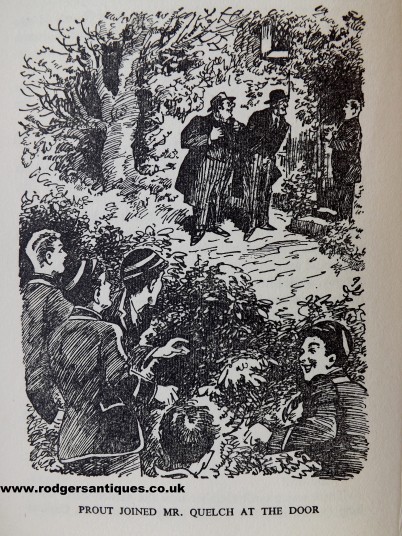British Toy Companies : Scalextric
Scalextric Race Game
For the purpose of this post I don’t intend to cover the full history of Scalextric in all its forms. To do so would take forever, so I am concentrating my efforts from its inception until around 2000 or so.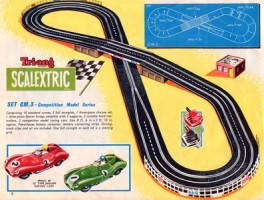
My brother and myself had a set given to us as our main Christmas present when I was about 10 or 11 years old, which would have been way back in the early 1960’s or so. The set could be made up into a figure of eight with a bridge under which ran a chicane. The cars were the Jaguar D types, one green and one blue with a head and shoulders driver-in, manufactured from moulded plastic.
My brother and myself plus a couple of mates would spread ourselves on the living room floor, those not actually ‘racing’ were the marshals, it was their job to place the cars back on the circuit if they came off … on average about every other lap !
We both thought it was the best thing since sliced bread ! Not sure if our parents agreed with that especially after about 3 hours of non stop racing ! !
Enough of that … lets look at some of the facts …
Scalextric came out of the ‘Scalex’ racing car models of Minimodels Ltd, which was a clockwork powered race car system that first appeared in 1952. When their inventor, “Freddie” Francis (who sadly died of cancer in 1998), added an electric motor to these models they became Scalex -electric or Scalextric cars. These were first shown at the annual UK- Harrogate Toy Fair in 1957, the first set contained metal models of a blue Maserati and a green Ferrari and were an instant hit with the dealers. In 1958, the brand was sold to Lines Bros., which operated as Tri-ang Toys.
Tri-ang’s subsidiary Rovex, which specialised in plastic, then developed Scalextric for the mass market, converting the metal cars to easier and cheaper to mould plastic versions. The track, which was originally a rubber compound, later became moulded plastic. Production continued at Minimodels in Havant, Hampshire until 1967, when it moved to Rovex’s own site.
When Lines Bros collapsed, its subsidiary Rovex-Triang, which handled Scalextric and the Triang railway brand, was sold off, eventually becoming Hornby Railways. Although Scalextric remains based in the UK, most of the products are now made in China.
The Sets :
Original sets came with pieces of interconnecting track made from rubber and two metal model racing cars.
The cars chosen for the first sets in 1957 were a Ferrari 375 and a Maserati 250F – then driven by big name Grand Prix rivals like Stirling Moss, Juan Fangio and Alberto Ascari.
The tracks and cars were built to a scale of 1:32 – and the cars were capable of a scale speed of 130mph.
A 1957 set cost five pounds, 17 shillings and six pence ( £5/17/6d ) – the equivalent of around £120 in today’s money.
Scalextric is typically sold as a set containing enough track to make a circuit, the necessary power supply and throttles and two cars. The cars are usually based on real vehicles from Formula 1, A1 Grand Prix, Nascar, rallying, touring, or Le Mans, or simply based on ordinary road going cars.
Most Scalextric models are 1:32 scale, though between 1968 and 1970 Super124 cars and track were manufactured at 1:24 scale. In the late 1990s, Micro Scalextric at 1:64 scale was introduced. Needless to say cars and track are not compatible between scales.
The Track :
Standard track consists of several straights of various lengths and corners of different radii and degree of turn. Special track includes several different styles of chicane, cross-over tracks, crossroad track and humpback bridges.
There are five generations of 1/32 scale Scalextric track.
- Original Scalextric Track (Mk. 1): This was made from rubber with thin, vertical electrical connectors, and held together with separate metal clips. This track had white lines between the lanes.
- Original Scalextric Track (Mk. 2): Released in 1962, the material became plastic, electrical connections were through wider, horizontal pins, and the track was held together by two integrated circular, spoon-shaped pins and sockets moulded into each end. Converter pieces were available to link the two types. It is now known as Classic track. Classic track is compatible with another leading brand, SCX’s classic track.
- No major track developments until we saw the introduction of the smooth surfaced plastic track, released around 2001 termed the Scalextric Sport. The track connectors were now square and slotted into place and ‘converter’ pieces were now available to allow the link to Classic track.
- A leap forward for Scalextric in 2004 with the Scalextric Digital, compatible with Sport it allowed up to 6 cars on a 2 lane track at any one time, with each car fully controllable.
- Scalextric Start released in 2010 it was supposedly a basic track for children (funny I thought that was where I started out in the late 1950’s).
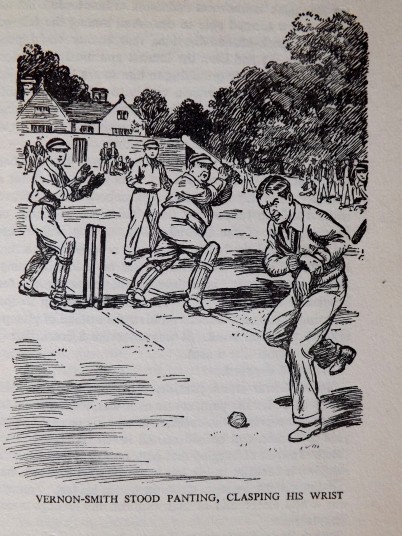 The illustration that first caught my eye and sent me along this pointless path was the one shown opposite !
The illustration that first caught my eye and sent me along this pointless path was the one shown opposite !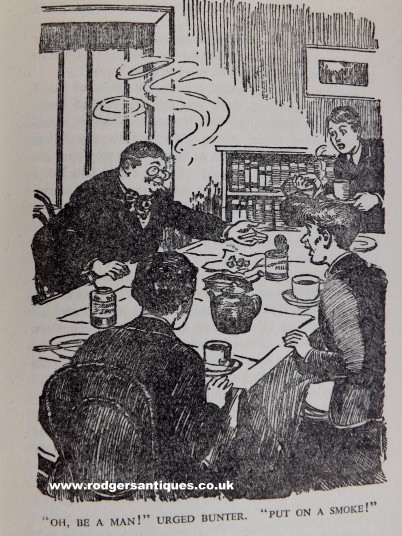 to deliver a message from Wingate, Bunter decides to
to deliver a message from Wingate, Bunter decides to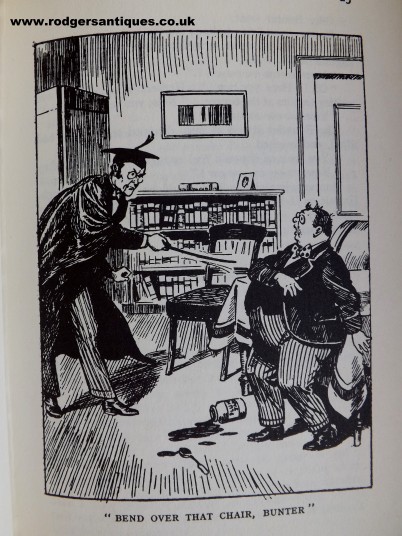 Sitting in Mr. Quelch’s armchair, Bunter opened that pot of jam. Unluckily he had no spoon, but on Mr. Quelch’s table lay a paper-knife which answered the purpose fairly well. With that implement Bunter scooped out jam and conveyed it to a large mouth : and chunk after chunk of delicious plum jam followed the downward path. It was a happy, sticky Bunter that cleaned out the jam-jar with the ivory paper-knife.
Sitting in Mr. Quelch’s armchair, Bunter opened that pot of jam. Unluckily he had no spoon, but on Mr. Quelch’s table lay a paper-knife which answered the purpose fairly well. With that implement Bunter scooped out jam and conveyed it to a large mouth : and chunk after chunk of delicious plum jam followed the downward path. It was a happy, sticky Bunter that cleaned out the jam-jar with the ivory paper-knife.